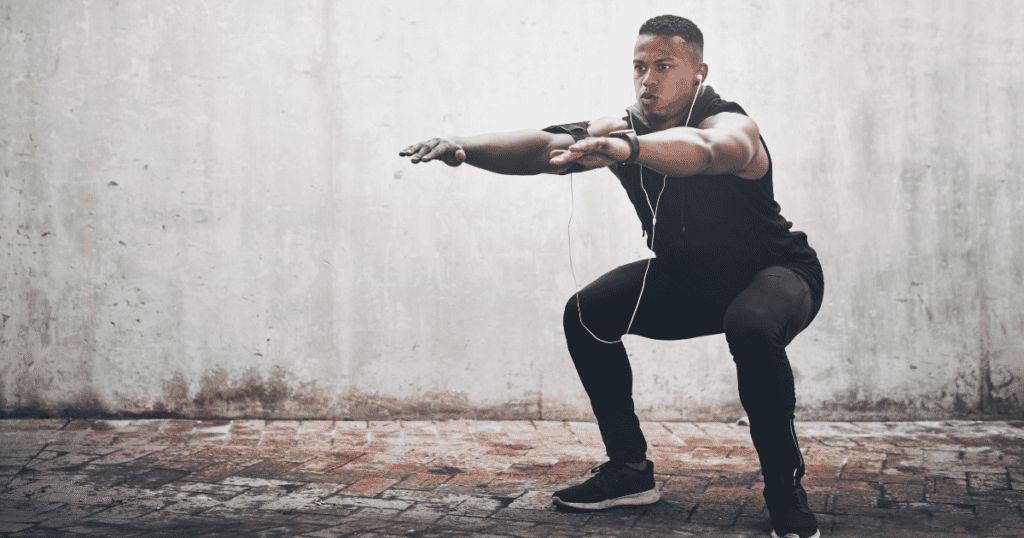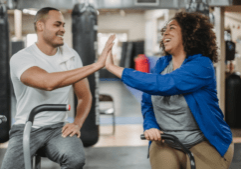Functional Fitness: Just a buzzword or your new favorite way to train?
You might’ve heard the phrase “functional fitness” before, but what does it actually mean?
The idea of functional anything is that the focus is on what an object does instead of what it is. When talking about our bodies, and even more specifically, our muscles, we’re talking about the movements our muscles produce when they’re firing and not the muscles themselves.
Instead of just focusing on isolated muscle groups, functional fitness utilizes the major muscle systems of the body and how they’re all connected.
Connecting the muscles together translates to movements we do regularly, such as standing up, sitting down, picking things up, and walking, which don’t just happen with one part of our body.

Most people use these basic functional movements on a regular basis. Training for these movements helps us get stronger and more effective at them to avoid injuries. Below is a table of some of the basic functional movements, how they help us in our daily lives, and exercises that can be used to strengthen those movements.
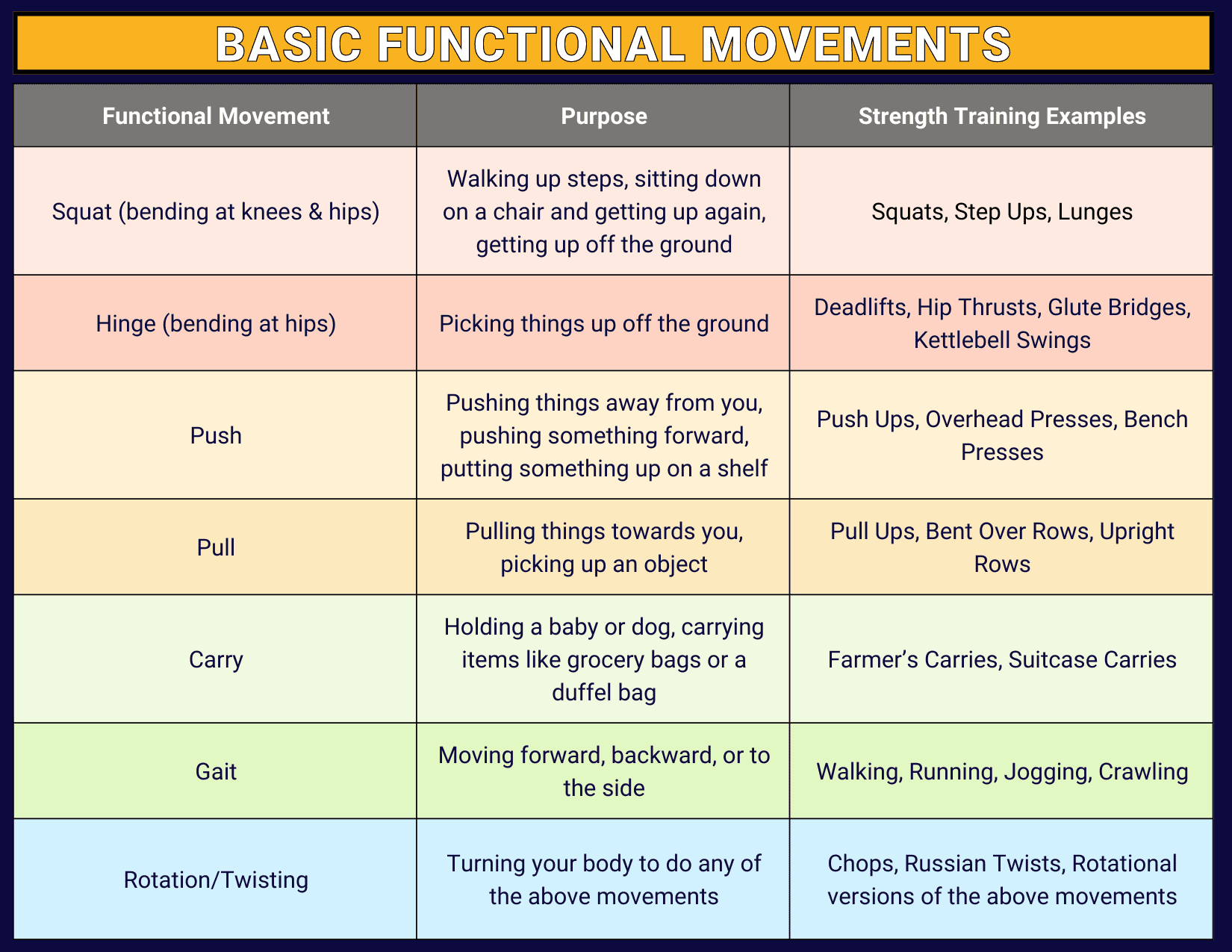
Why train this way? The benefits of functional fitness.
Aside from internet trend popularity, part of the reason functional fitness has become such a huge buzzword is because this way of training is relatively unknown to the general public! It’s more common to find people who know about leg day, chest day, or back day (training specific muscle groups) than hinge day, pull day, or push day (training functional movements).
Training muscle groups is more similar to how a bodybuilder trains and is suited toward aesthetic goals. Training functional movement includes more full body training, with a bigger focus on core muscles. This helps a person function better in their everyday life. When functional movements aren’t trained, it can cause people to avoid them out of fear of injury.
For example, when I worked at a warehouse years ago, the onboard training and many signs around the warehouse instructed us how to pick up boxes. Essentially, it included no torso rotation, assuming that many people get hurt when twisting while picking up a box. Why? Because very few people include rotation/twisting in their training, and we start to lose the ability to do movements when we don’t train them.
Another example of this is the ability to stand up without assistance after sitting on the ground, a movement many people lose as they age. Functional fitness aims to prevent this loss of movement, encourage a longer healthspan (the part of a person’s life where they’re generally in good health) and prevent injuries.
More Functional Training Ideas

Odd Positions:
Functional fitness can also include specifically putting the body in odd positions and strengthening them. These can mimic challenges we encounter in our lives like:
- moving objects over our heads
- picking things up from beside us or farther away
- pulling something sideways, or
- reaching in different directions.
We may not do those movements every day, but our bodies will be prepared when the need shows up, and we can do them without getting injured.
Truly functional fitness is moving in as many ways as we can as often as we can. In my training, I call it breaking out of your cylinder!
Balance Training:
Balance training is another huge aspect of elongating our heathspan. Training movements in unstable environments helps the stabilizing muscles get stronger. With long term training, they continue to be strong as we get older and more prone to balance issues.
Power Training:
Similar to balance training, power training can be applied to all of these movements by adding the idea of explosiveness.
Power doesn’t just have to mean big jumps or heavy barbells, it can mean trying to do any movement more quickly.
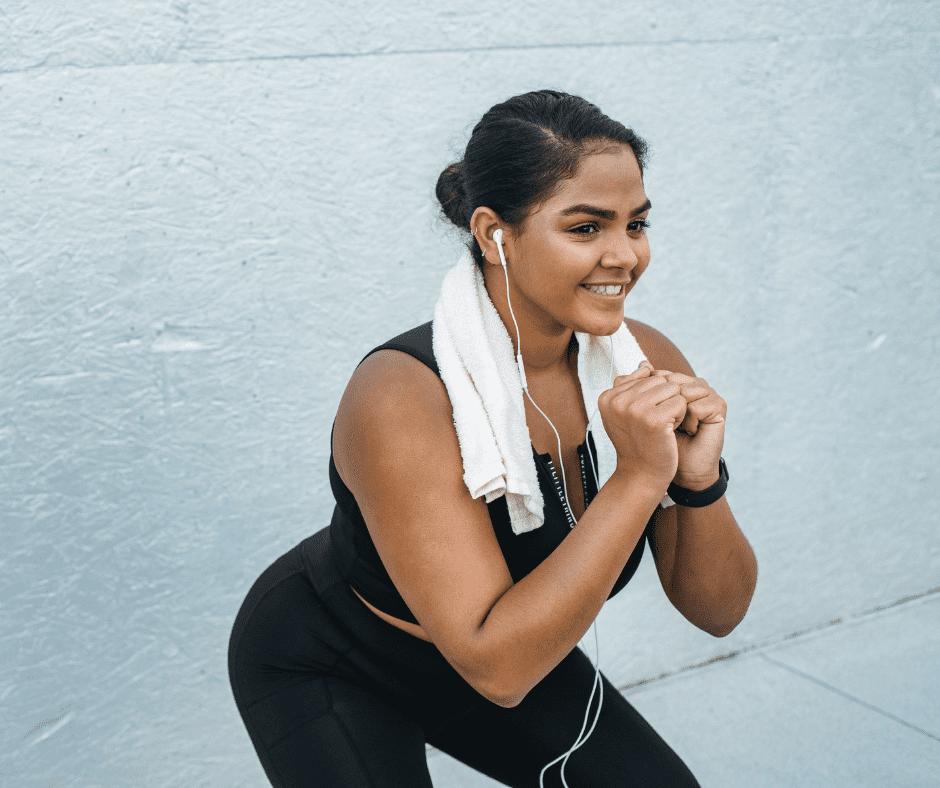
Your Own Functional Fitness
Now here’s the catch: any movement is a functional movement if it applies to what you want to do.
We talked about the basic functional movements above that apply to most people, but there may be specific things you do during your day that you want to strengthen. Those movements can be incorporated into your training!
Here’s a couple examples:
- John has to lift objects onto higher shelves during his work day and wants to feel stronger doing so. He incorporates overhead presses and push presses into his workouts to help strengthen those muscles.
- A bicep curl is generally considered an aesthetic exercise instead of a functional one, but let’s say Sam makes perfume and is constantly bringing items on their desk up to their nose to smell. Pretty close to a bicep curl, right? In this case, a functional movement for them would be curls, because it strengthens muscles they use all the time.
- Back to my warehouse example, I added more twisting in my training so that I could feel stronger lifting boxes from the ground at my side to a shelf in front of me without having to stop, turn my whole body, pick up the box, then turn my whole body back to the shelf.
Anything that helps you move better day-to-day is a functional movement, and that's different for everyone. One person's favorite functional movement might be something that you don't like and doesn't benefit you at all. This is why it's important to figure out what works best for your body and what types of strength and movement will help you specifically.
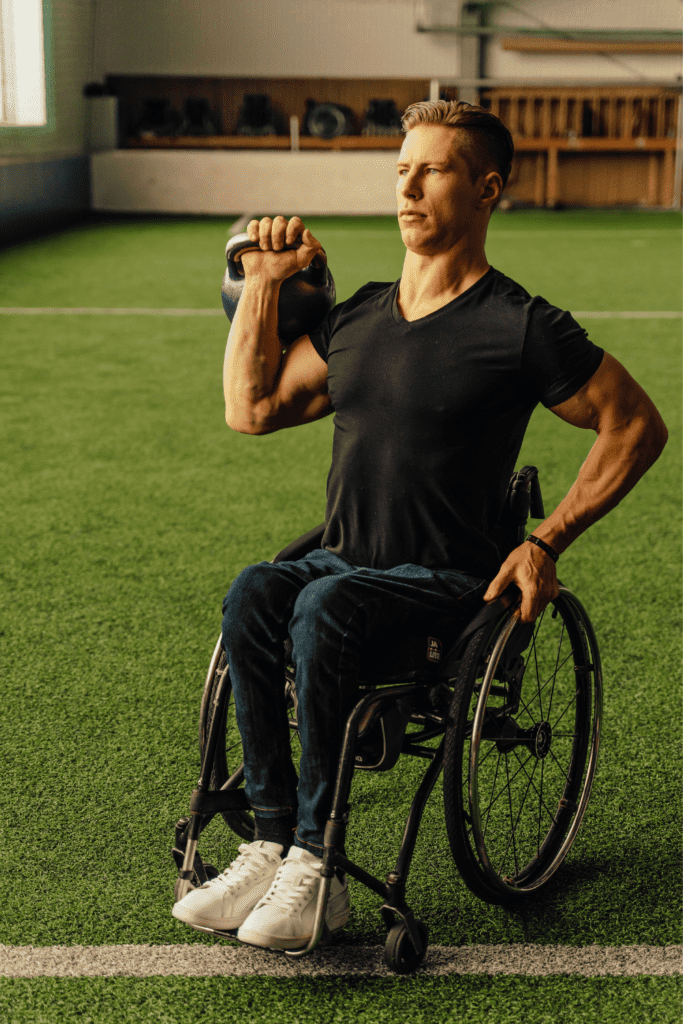
Think about tasks and activities you do daily, weekly, or even monthly. Are there similar movements you can add into your workouts that will help you feel stronger or move better during those activities?
Sarah Siertle, a strength and movement coach, specializes in introducing people to strength training and works to make the fitness world a more inclusive place. She has been a movement instructor since 2012 and also teaches swing dance around the US. Find other articles written by Sarah on her coach profile. Let Sarah help you get STRONG so you can take advantage of life’s adventures!


